Fisher Scent Marking
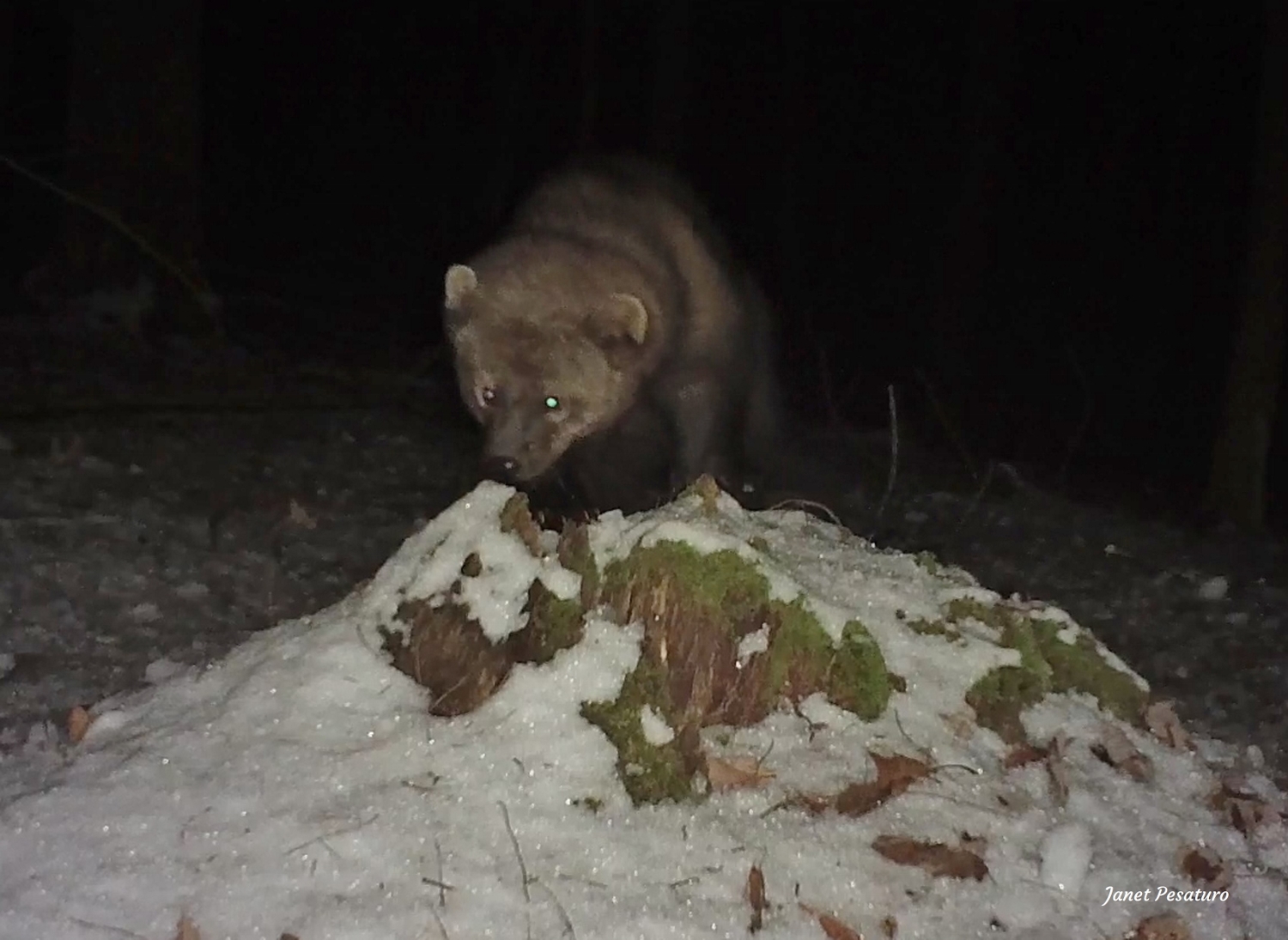
Many mammals use urine, scat, and glandular secretions to communicate information about their identity, territorial ownership, social status, sexual readiness, etc., and fishers, Pekania pennanti (formerly Martes pennanti) are no exception. In this piece on fisher scent marking, I review the sources of chemicals fisher probably use for communication, discuss how to find and identify fisher scent posts, and share some videos of fishers in action. These animals often return to “freshen” the same scent posts repeatedly, so they make great camera trap targets.
Scent Sources
Scat, Urine, and Sweat
The fact that fishers often leave scat or urine on certain surfaces (see “Identifying Fisher Scent Posts” below) to which they and other fishers return, suggests that scat and urine are used for scent communication. Sweat may convey some information, and micro-organisms on skin and mucosa can also produce compounds used as chemical messengers by the host animal.
Plantar Gland Secretions
Both male and female fishers have glands on the bottoms of their feet. They enlarge during the breeding season, which suggests they are important for communicating information useful to potential mates.
Anal Sac Contents
Like most mustelids, fishers have anal glands (sacs). Unlike the anal sac secretions of the small weasels, which smell strong and offensive to humans, fisher anal gland secretions have been described as weak and inoffensive to the human nose. I don’t know whether anal sac contents are secreted with scat or separately, and I’m not sure I’ve ever encountered it, but I have never noticed any strong or objectionable odor at a fisher scent post.
Abdominal Glands Secretions (?)
The literature is inconsistent on the presence or absence of abdominal (ventral) glands in fishers. Some sources state that they do have abdominal glands, citing a 1984 report by R. J Pittaway, but that paper says that abdominal glands have NOT been detected in fishers. If you know of an actual study showing the presence of glands or glandular tissue on the abdomens of fishers, please let me know in a comment. Fishers do rub their undersides on their scent posts, suggesting they are leaving scent from their abdomens.
Finding Fisher Scent Posts
Habitat
Fishers are creatures of the forest where winters are cold enough for snow. Within their range, fishers will use just about any forest type as long as there are large diameter snags and trees with cavities. They need trees of at least 14 inches in diameter because females need cavities large enough to house a litter. Good fisher habitat also has plenty of logs because fishers hunt under and around them, and also seek shelter under woody debris in winter. Youngish, logged forest is fine, as long as some large trees, snags, and logs were left on site.
Timing
Snow tracking is the best way to find fisher scent posts. Not only is snow a great substrate for tracks, but scat and urine also show up much better against a white background. Start searching for fisher tracks in the snowy woods as early as possible. The books say the peak of scent marking is in March but I see quite a surge in January and February, and they do some scent marking year round. There’s no harm in starting early, and getting your camera out as early as possible helps ensure you’ll get some action.
For detailed information on fisher tracks and trail patterns, see one of my earlier posts Fisher Tracks and Sign. Once you pick up a fisher trail in snow, there’s a good chance it will take you to a scent post, especially if it is a male fisher. Elbroch states that both males and females scent mark but most, if not all, of the fishers I’ve seen working scent posts on trail camera videos have been adult males, so it may be more common among males. Elbroch also states that fishers mark the scent posts of other fishers, so these sites are hot spots of activity.
Permanence
Fishers sometimes use the same scent posts for consecutive years, so if you know of one they were using last year, check for activity this year. It would be interesting to learn if scent posts persist for generations of fishers or for just the life span of the resident individual.
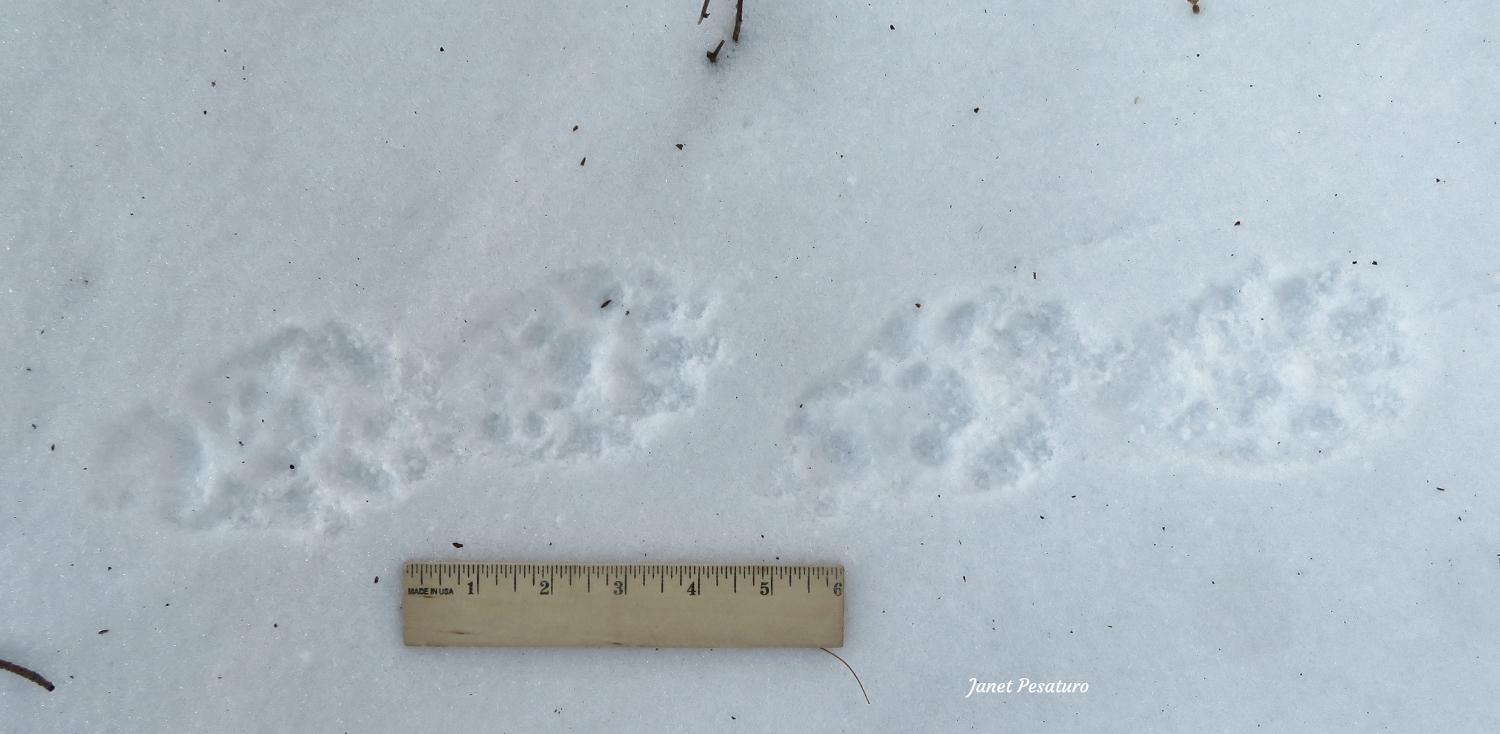
Identifying Fisher Scent Posts
Characteristics of Scent Posts
Elevated surfaces
Fishers most often mark on an elevated surface such as a stump, log or rock. Most of the fisher scent posts I’ve found (that I can recall) were stumps, which varied in size from about 8 inches to 2 feet in diameter. Most were moss covered, which I discovered after the snow melted. Some of them have a scary looking, spire-like prominence where the fisher seems to prefer for rubbing its groin, though he tends to rub the rest of the stump, too. By scary I mean that it looks it would be painful to rub such a protuberance the way the fisher does.
Exception to the rule
While raised surfaces are preferred, fishers occasionally scent mark on flat ground. Once I even saw where a fisher rubbed, rolled and urinated in a small depression.After the snow melted, there was nothing of visual significance in that spot (no small stump, rock, or sapling) that the fisher might have remembered from snow-free days). So keep your eyes and your mind open as you track. Evidently fishers don’t read the books or subscribe to journals.
Saplings?
Fishers are said to “maul” conifer saplings, doing all of the same things they do when marking stumps, logs, and rocks, but also biting the saplings. I have never found a sapling so used by a fisher. Maybe they simply prefer stumps, which are very common where I track.
Clustering
Scent posts may sometimes be clustered. I don’t know how typical this is, but recently I found a cluster of 5 stumps within a 250 foot length of the fisher’s trail, all used as scent posts.
Fisher Sign at Scent Posts
In good substrate, there will be fisher tracks and rubbing marks where the fisher rubbed, dragged, and/or rolled its body. If the snow doesn’t register detail well, then the snow might look just smoothed and compressed. There may also be a scat and/or a squirt of urine. Fisher scat is quite variable in size and appearance and you can see several examples in Fisher Tracks and Sign. Some examples of urine marks are shown in the photos below. The urine does not have a strong, offensive, or especially distinctive odor.
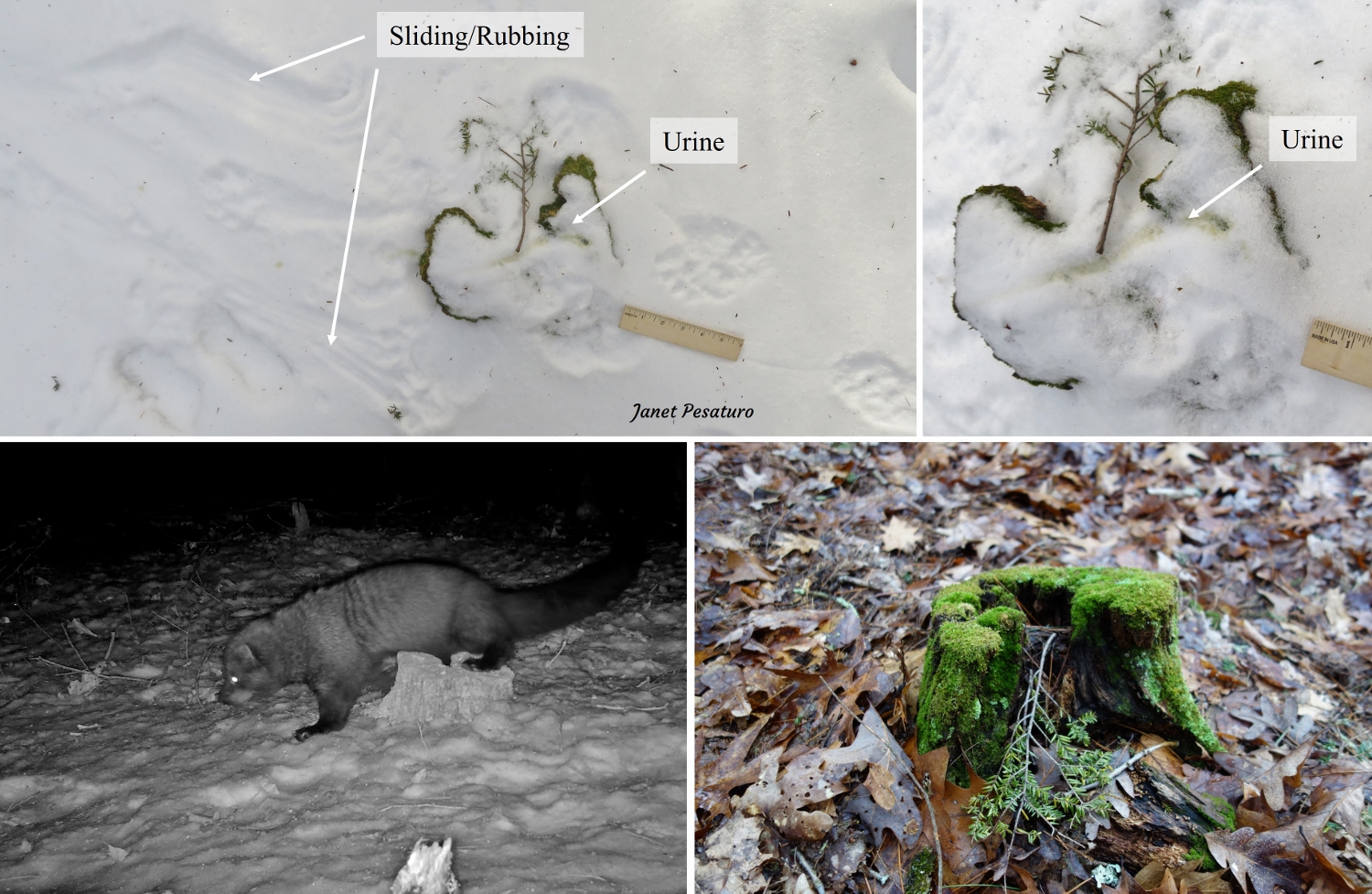
The composite photo below shows what may be anal gland secretion – a dark splat about the size of a coin. Powell (1981) described black, tarry fecal-like deposits that fishers make during the breeding season, and suggested they might be anal gland secretions.
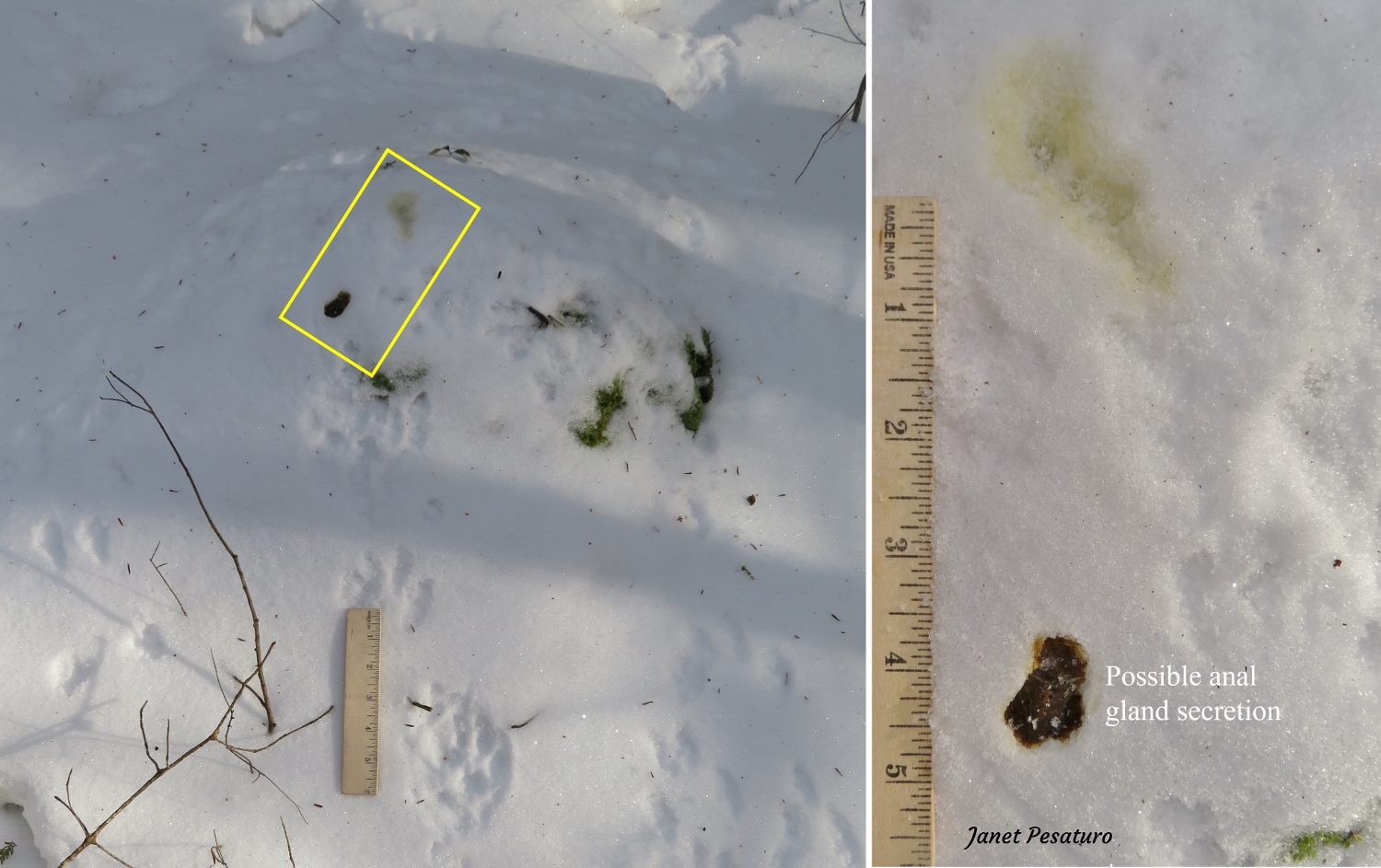
Fishers may favor stumps with a pointed or tapered prominence where they concentrate their groin rubbing. I have seen videos in which the prominence was the highest point of the stump, suggesting they may be choosing the most elevated spot so the scent will carry better. But on the stump pictured below, the pointed prominence where the fisher preferred to rub his crotch is not the tallest part of the stump.
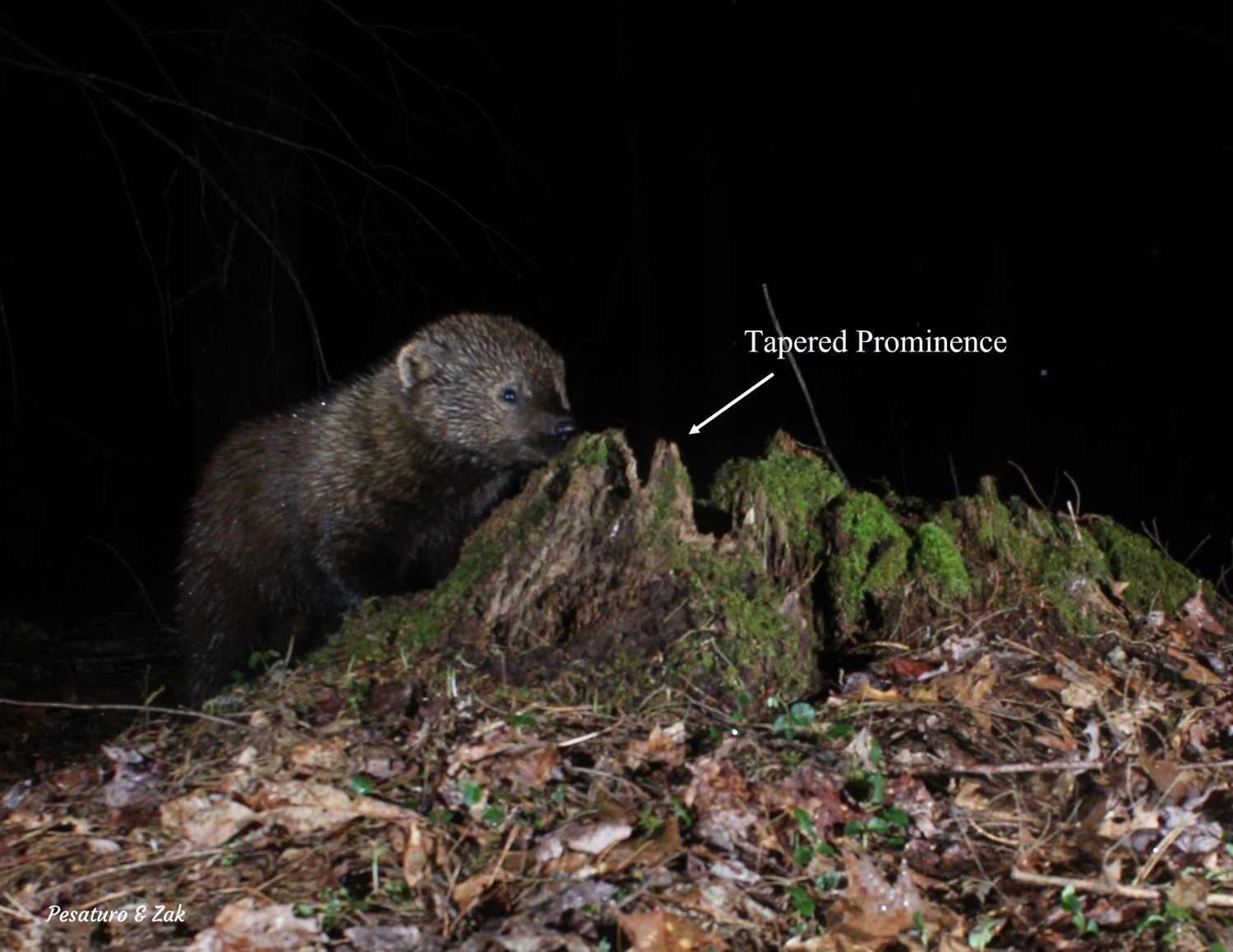
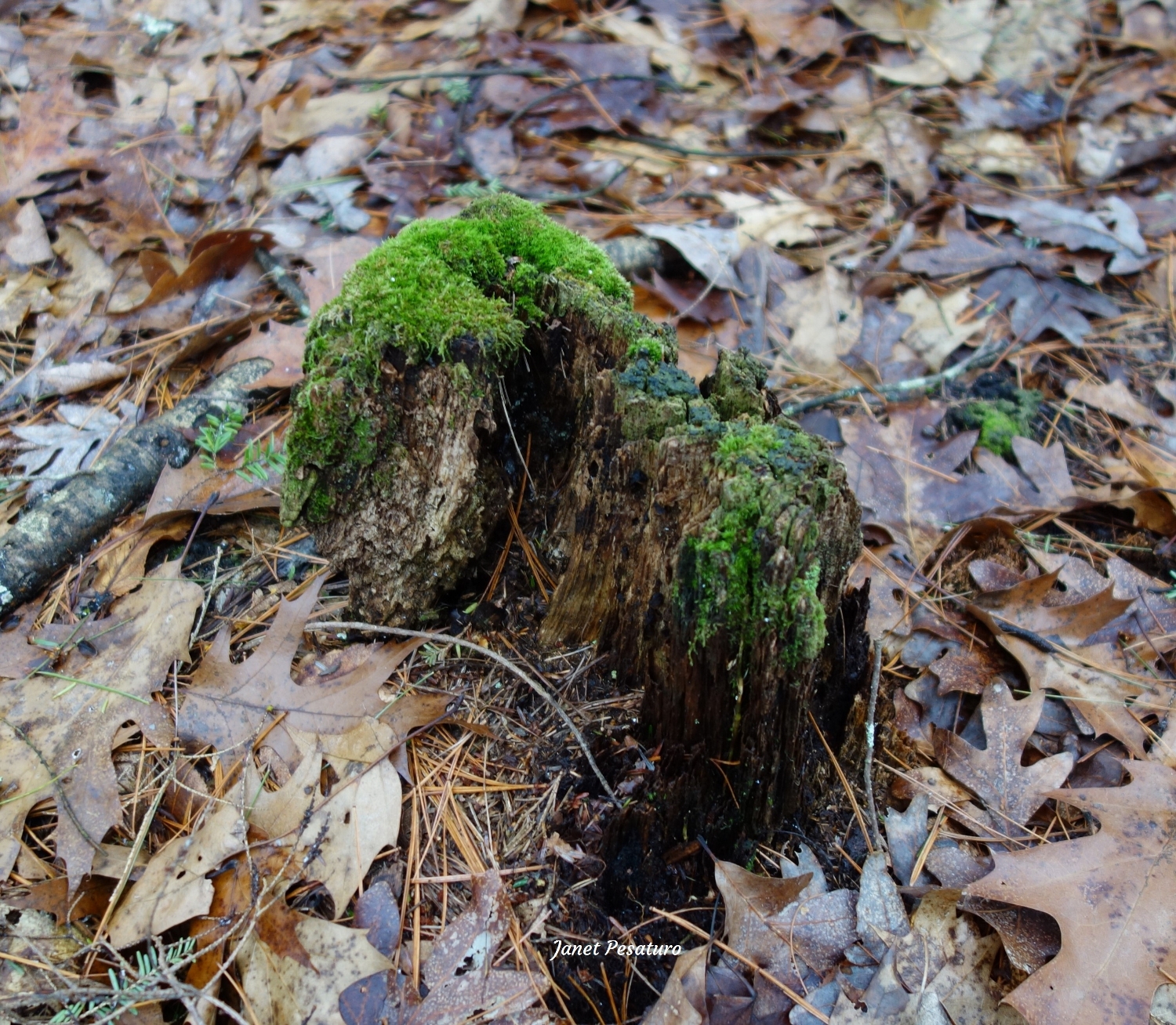
Fisher Scent Marking Behavior – Videos
Video 1
Here, the fisher marks for about 15 seconds, which is typical. In this case “marking” is rubbing his whole underside. He is probably also leaving scent from plantar glands but does not appear to deposit scat or urine.
Video 2
In the next video the fisher marks (the same stump as in #1) for about 1 minute and 15 seconds. That is much longer than any other bout of fisher scent marking I’ve seen.
Video 3
The next video shows a fisher marking at two different stumps within 50 feet of each other. He marks at one for about 12 seconds, but barely pauses at the other.
Summary
Fishers probably use a number of substances from their bodies for scent communication, including scat and urine, as well as secretions from anal glands and plantar glands. To my knowledge, it’s still unclear whether they have glandular tissue on their abdomens, but their behavior at scent posts suggests they are marking with their bellies. While several different scent marking behaviors are described in the literature, these tend to occur in combination during any given visit to a scent post. Scent posts are most commonly elevated surfaces, and marking peaks in winter and early spring.
Sources
Elbroch, M. and K Rinehart. Behavior of North American Mammals. Boston, MA; New York, NY: Houghton Mifflin Harcourt, 2011.
Pittaway, R. J. “Fisher, Martes pennanti, Scent Marking Behavior.” Canadian Field-Naturalist. 98 (1984): 57.
Powell, R. A. “Martes pennanti.” Mammalian Species. 156 (1981): 1-6.
Feel free to leave your questions, thoughts, and observations in a comment below!

Excellent post, as usual, Janet. Thank you for taking the time to curate helpful video, text and research.
Thank you, Dan. It’s an obsession…
Very informative article. It assisted me in locating my first fisher tracks & sign. A re-read of the article this morning and heading back out at first light.
Thanks for your help
Jim
Hey James, that’s great!! Are you setting a camera on the sign? I look forward to seeing what you get!
Janet, you continue to amaze. The generosity with which you share your vast knowledge and observations of animals is astounding and I thank you for the opportunity to learn so much.
Thank you for the kind words, Ginny. Happy tracking!
Hi Janet: While we missed the live presentation of your talk through the Camden,ME library, we were glad to be able to watch the video online. An excellent talk, but I’d like to add two points if I may.
1) when scouting out scats piles and crotesings in general, be VERY careful about handling them. Almost all wildlife carry some level of parasites (porcupine intestines would frighten most people!) and many of those parasites are passed on as eggs or similar forms through scat (for example, the coyote rolling in otter poop). Some parasites are very host specific, but Echinostoma revolutum (for example) can be found (IIRC correctly) in 23 species of mammals and 9 species of birds. This is a whole topic unto itself, but at the VERY least, wear gloves.
2) If you find a dead mammal in the woods – depending on where you are – be mindful of things like rabies. In the NE US raccoon rabies is the most dominant form, but any mammal – including humans – can contract rabies. After 16 years working with rabies research I could tell you more stories than you’d want to hear. One example is a deer research crew that came across a dead deer carcass in the woods, and after trying to determine the cause of death, let’s just say that everyone present received rabies vaccination. And don’t forget bats. Bats in the NE US are more likely to die from white-nosed bat syndrome, but tell that to the little girl in Georgia who had a rabid bat fall into her lap during church services.
I don’t want to advise people to stay out of the woods by any means, but be aware of what challenges you might face. Even a deer mouse can be vicious in protecting her young…
Hi Mike, I’m glad you enjoyed my talk! Yes, there are many precautions one should take when engaged in outdoor activity. Perhaps even more imminent than those you mention are suggestions for minimizing the risk of tick bites and what one should do when one finds one attached. I don’t include discussion on those issues when speaking on camera trapping because I need to maintain focus on the stated topic. However I’m sure such a presentation would be interesting and very useful to many people, and you sound like the perfect person to do it 🙂